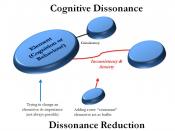A critical evaluation of attempts to reduce prejudice.
This essay will critically evaluate, with the use of recent examples, the attempts to reduce prejudice through psychological theories and explanations. Concentrating on the methods used by the media, law and education. "Prejudice is an attitude, usually negative, towards the members of some group, based solely on their membership of that group"ÃÂ (Baron and Bryne 1991) prejudice can be in the form of racism, sexism, ageism, sizeism and many more. Discrimination contains three main components; cognitive, affective and behavioural. Allport believes that there are five varying degrees in which discrimination against others is displayed; these are through hostile talk, avoidance, exclusion, physical attack and extermination.
The media attempts to reduce prejudice externally through persuasive communication the aim of which is to try and change the attitudes to which people have learnt. The main ways in which the media puts forward these ideas are through un-prejudice balanced reporting, the use of positive role models, which help to break stereotypes, for example if someone has a view of all black people as being uneducated then a black person with a high status, such as a black politician will help to break the stereo type.
The media also helps to provide contact with minority groups, such as black people, old people, women and the disabled. The media uses political correctness and correct wording, for example, police person, so as not to allow the attachment of a stereotype to emerge. The messages portrayed by the media are either in an implicit way, allowing people to think about and take in what they have seen or heard, or an explicit way, which gives a direct message. McGuire, (1968) believes that the implicit messages may be more effective if the recipient is capable of and likely to draw...


